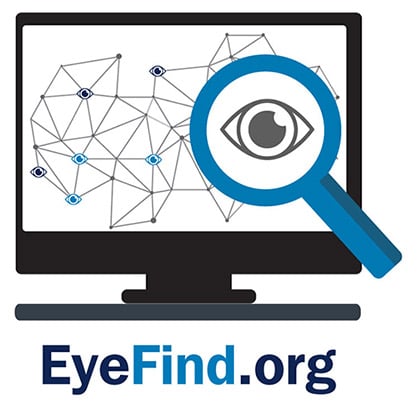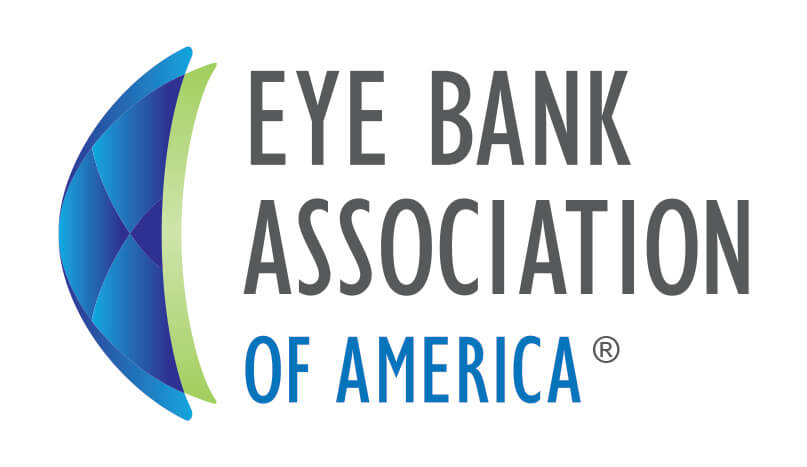EyeFind Research Grant Program
 The use of human eye tissue in experiments can be critical to effectively addressing a researcher’s scientific question, particularly those involving uniquely human ocular disease. Many preliminary research projects do not have sufficient funding to cover the cost of procuring a sufficient supply of human eye tissue to carry out initial experiments.
The use of human eye tissue in experiments can be critical to effectively addressing a researcher’s scientific question, particularly those involving uniquely human ocular disease. Many preliminary research projects do not have sufficient funding to cover the cost of procuring a sufficient supply of human eye tissue to carry out initial experiments.
EyeFind Research Grants provide supplemental funding in grants of up to $5,000 per project to researchers to procure human eye tissue samples from eye banks for use in a well-conceived research project. The applicant must demonstrate financial need related to procuring and using human eye tissue to continue their research.
2025 Timeline
Cycle 1:
Applications open April 1
Applications close May 31
Recipients notified by June 2025
Program intent
In addition to providing funding, the EyeFind Research Grant program also seeks to help researchers develop working relationships with eye banks. Applicants must use an eye bank that is listed on the EyeFind online tool. For applicants outside the United States, applicants must confirm that their source eye bank is a member of their national/transnational eye bank association.
Use of funds
Funds must be used to underwrite the costs of procuring human eye tissue for the research project outlined in the applicant’s EyeFind Research Grant application. Funds may not be used to purchase equipment or to support salary. Funds are paid directly to the researcher’s nonprofit or academic research center. No overhead fees can be assessed by the recipient’s institution. Approved funds are sent to the grantee, not to the eye bank.
Eligibility
Eligibility criteria include the following:
- Applicants must be an ARVO member or affiliated with an EBAA member eye bank
- Applicants must hold an MD, PhD, DVM, DO, OD, or equivalent degree
- Applicants must be appropriately trained to lead an independent research study and have evidence of the capacity to do research, including infrastructure and institutional support
- Applicants must be working in a nonprofit or academic research center
- Applicants must have space available to conduct the research and be qualified to conduct the research according to his/her institution’s guidelines
- Applicants must demonstrate financial need for procuring human eye tissue
- Applicant must use an eye bank listed in the EyeFind online tool; for applicants outside the U.S., the applicant must confirm the source eye bank is a member of their national/transnational eye bank association
- There are no geographic or citizenship restrictions, though the applicant must be able to reliably procure usable human eye tissue
- ARVO and ARVO Foundation Officers, Board members and ARVO Foundation Awards Committee members are not eligible to apply for or be nominated for an award, nor may they supply letters of support during their terms
Application process
The application consists of submission of:
- Research project description, including:
- Project introduction and justification of use of human tissue (200 words max)
- Experimental plan (200 words max)
- Anticipated results and impact (200 words max)
- Amount of funding requested for human eye tissue (up to $5,000 USD)
- NOTE: If diseased eye tissue is a central component of project, applicants must detail how the presence of disease in eye tissue will be confirmed/evaluated. In these cases, age-matched control tissues must be included as part of experimental design.
- Letter of support from an institutional official certifying the lack of funding for human eye tissue, affirming space is available to conduct the research project, and affirming the applicant is qualified to conduct the research according to institutional guidelines.
- Letter of commitment from the supplying eye bank certifying that the eye bank has the capacity to fulfill the specific needs of the investigator. The letter should affirm the number and type of eye tissues, their availability, the cost of the tissue and shipping details. If obtaining disease tissue is a central component of the project, the eye bank must indicate the applicant or eye bank partner will have access to medical records sufficient to confirm presence and extent of disease in donor tissue. For example, “Eye bank has capacity to provide two glaucomatous eyes per month to the researcher at $1,500/pair.” A sample letter is available as a template, if needed.
- NIH biosketch or equivalent
- Affirmations of adherence to all relevant ARVO policies, including compliance with local Institutional Review Board (IRB) requirements (proof of IRB exemption required)
Applicants may submit one application per person per calendar year.
Application period
Applications are accepted twice annually in two award cycles:
- Cycle 1: Applications open April 1 - May 31
- Cycle 2: Applications open Sept. 1 - Oct. 31
Reporting
Grantees will be expected to submit their findings for possible presentation at an ARVO Annual Meeting and/or the Cornea and Eye Banking Forum through the abstract submission process and to publish results as appropriate in ARVO, EBAA or other scientific journals. At the conclusion of the grant, a final report must be submitted to the ARVO Foundation within 30 days of completion.
Policies
The ARVO Foundation requires that applicants abide by the following ARVO policies: Statement for the Use of Animals in Ophthalmic and Vision Research, Statement on Registering Clinical Trials, compliance with local Institutional Review Board (IRB) requirements and any additional local rules and regulations.
2024 EyeFind Research Grant recipients
Cycle 2
Mohit Parekh, PhD
Schepens Eye Research Institute, Massachusetts Eye and Ear
Role of age on the migration speed of Fuchs endothelial corneal dystrophy (FECD) cells for Descemet’s Stripping Only
Eye Bank: Eversight Eye Bank
Isabel Lopez Sanchez, PhD
Centre for Eye Research Australia
Single-Cell Transcriptomic Analysis of Human Postmortem Retina in Leber Hereditary Optic Neuropathy
Eye Bank: Lions Eye Donation Service
Sponsorship
The EyeFind tool and EyeFind Research Grants stand to benefit the entire eye and vision research community. The ARVO Foundation is grateful to our partners who have committed to helping researchers access the tissue samples they need. To inquire about partnership opportunities, please contact info@arvofoundation.org
Gold Sponsor
Founding Partners




